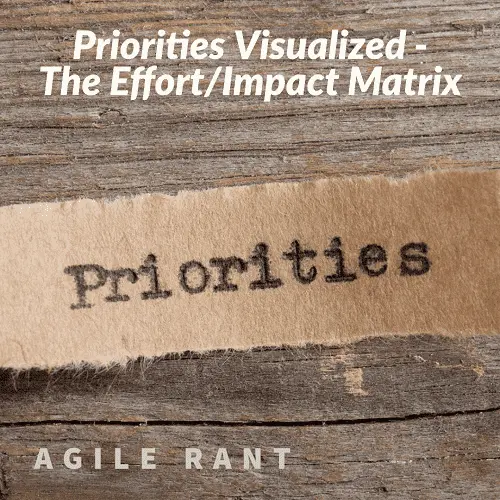What is a user story? A user story is a concise and simple narrative used in Agile software development to capture the requirements and expectations of users. It is a way to express user needs from their perspective to the Agile team and provide a clear understanding of the desired functionality or feature. User stories are typically written in a structured format and serve as a means of communication between the development team and stakeholders. They are also a way to breakdown and organize the product feature needed. Or the software features the team will build.
What is a user story
A user story typically consists of three main elements: the user, their goal, and the reason behind that goal. These elements combine for a simple description of the work for the project team.
Lifecycle of a User Story Organizing User Stories with Story Map Related Links In software development and product management, a user story is an informal, natural language description of one or more features of a software system.
Source: visual-paradigm.com
It follows a simple template: “As a [type of user], I want [goal] so that [reason].” Let’s break down each component of this user story format:
User
This describes the role or type of user who will benefit from the feature or functionality. It could be a specific user persona or a broader category. For example, “As a customer,” “As an admin,” or “As a first-time user.”
Goal
This specifies what the user wants to achieve or the desired outcome. It should be concise and focused on a specific action or functionality. For example, “I want to view my order history,” “I want to edit my profile information,” or “I want to search for products by category.”
Reason
This explains the purpose or benefit behind the user’s goal. It helps the development team understand the underlying motivation and consider the user’s perspective. For example, “so that I can keep track of my previous purchases,” “so that I can update my contact information easily,” or “so that I can find the products I’m interested in more efficiently.”
By using this format, user stories provide a clear context and help prioritize development efforts based on user needs. They are concise, user-focused, and avoid technical jargon or implementation details, which allows for flexibility and encourages collaboration between stakeholders and the development team. They are a repeatable and easy way to express user needs to the scrum teams working on the effort.
User stories are often written on index cards or digital tools, such as project management software or Agile management platforms. They are typically organized into a product backlog, which serves as a repository of all user stories. During sprint planning or backlog refinement sessions, user stories are reviewed, prioritized, estimated, and assigned to development iterations.
What is a user story, it is not full requirements
It’s important to note that user stories are not comprehensive requirements documents but rather placeholders for conversations and collaboration. Agile user stories provide a starting point for discussions between the development team and stakeholders, enabling them to clarify expectations, identify potential challenges, and make informed decisions throughout the development process.
In summary, Agile user stories are concise narratives that capture user needs and expectations in Agile software development. They follow a structured format, highlighting the user, their goal, and the reason behind it. User stories serve as a means of communication, facilitating collaboration and prioritization within the development team and with stakeholders. With the above, and the below tips, you don’t have to keep asking what is a user story.
Still asking what is a user story? Here are tips to create
- Use the “As a, I want, so that” structure: Follow the standard format of user stories by clearly defining the user, their goal, and the reason behind it. This helps maintain consistency and ensures a clear understanding of the user’s needs.
- Focus on the user: Keep the user at the center of the story. Avoid technical jargon or solution-oriented language. Instead, concentrate on the user’s perspective, goals, and expected outcomes.
- Keep it concise: User stories should be short and focused. Aim for simplicity and clarity. Avoid including unnecessary details or specifications that can be addressed separately.
- Make them independent: Each user story should stand on its own, without dependencies on other stories. This promotes flexibility and allows for easier prioritization and iteration.
- Use actionable language: Ensure that user stories are actionable and provide a clear direction for development. Use active verbs and specific action words to describe what the user wants to achieve.
- Prioritize based on value: Prioritize user stories based on their value to the user and the business. Focus on high-priority stories that deliver the most significant impact.
- Add acceptance criteria: Include clear acceptance criteria that define the conditions for the story to be considered complete. These acceptance criteria help the development team understand what is expected and enable effective testing.
- Collaborate with stakeholders: Involve stakeholders, such as product owners, customers, and end-users, in the creation of user stories. Their input and feedback are valuable for capturing the true needs and expectations.
- Use personas: If applicable, create user personas to represent different types of users. This helps in tailoring the user stories to specific user groups and ensuring that their needs are adequately addressed.
- Validate with user feedback: Continuously validate and refine user stories based on user feedback and testing. This iterative approach helps in incorporating user insights and improving the accuracy of the stories.
- Avoid assumptions: Ensure that user stories are based on real user insights and data rather than assumptions. Validate assumptions through research, user interviews, or user testing.
- Review and iterate: Regularly review and refine user stories as the project progresses. As new information and requirements emerge, update and adapt the stories to reflect the evolving needs of the users.
Last thoughts on user stories
Remember that user stories are living documents that can evolve and be refined throughout the development process. By following these tips, you can create effective user stories that capture user needs and guide the development of valuable and user-centric products.
User stories help identify the work and the actions from actual user activities. Then present in a way that helps the Dev team, software developers, product manager understand. The entire team benefits from having information presented in this easy to understand way.
Additional content after what is a user story
Also, a great read from Atlassian on user stories. User stories with examples and a template
To create and share story cards, try using a work management tool Conversation: A discussion between customers, users, and developers around the priority and potential solutions to the user story.
Source: asana.com
Product teams choose to break development work into user stories instead of product features or product requirements for several reasons.


